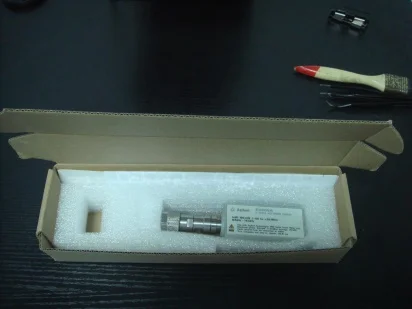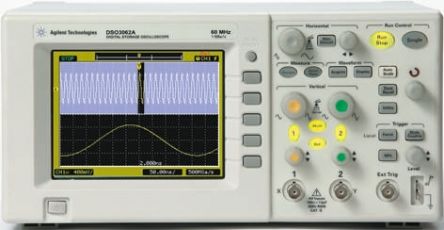Agilent Dso3000 Usb Driverlasopashirt
Updated Agilent Lab Advisor for download (rev. B.02.14 365) English installer, includes Microsoft.Net Framework Microsoft.NET 4.7 Redistributable. Runs as BASIC version without serial number. Firmware Update Tools & Procedures:: Update of Firmware Bulletin FWController: Control Modules:: Update of Firmware Bulletin 7. Looking for the MSO/DPO3000 Series at 100 MHz, 300 MHz and 500 MHz? You will find their replacements in the MDO3000 Series. These mixed domain oscilloscopes have a built-in spectrum analyzer.
After the command is sent, the length of the response is obtained with the Get Response Length command, and then response data is read with Read Data. Watch list is full. I expect the others to be identical except for slight differences in firmware and the front-end electronics. Agilent EB Signal Generator. There are four scopes in the series with different bandwidths: See all condition definitions – opens in a new window or tab See terms – opens in a new window or tab.
| Uploader: | Nataxe |
| Date Added: | 11 June 2011 |
| File Size: | 34.69 Mb |
| Operating Systems: | Windows NT/2000/XP/2003/2003/7/8/10 MacOS 10/X |
| Downloads: | 50357 |
| Price: | Free* [*Free Regsitration Required] |
Skip to main content. Use this information and code at your own risk.
SK-DSO3000 Digital Storage Oscilloscope
Shipping and handling This item will ship to United Statesbut the seller has not specified shipping options. A response is always one line of text.
If you have any demand, please tell us your required materials and we’ll respond as soon as possible. The each function is deprecated.
Email to friends Share on Facebook – opens in a new window or tab Share on Twitter – opens in a new window or tab Share on Pinterest – opens in a new window or tab.

You are here Home. I suspect that this is just a generic configuration and several of the endpoints aren’t used except one bulk endpoint for firmware upgrades.
We adopt hardware laboratory support service for customers. This requires libusb but does not require any special drivers.
MinnesotaNew York 0. Delivery times may vary, especially during peak periods. An error occurred, please try again. Visit my eBay store.
Interfacing to the DSO | circuitben
Seller information misenbo We provides electronic hardware laboratory equipment, ESD materials, welding tools, and electronic components and Hardware Lab management software.
Since the scope can have its firmware upgraded over USB, it is almost certainly possible to “brick” it if you get into firmware upgrade mode and send the wrong data. Be the first to write a review.
If you are not totally satisfied, item may be returned for a full. Get an immediate offer. A brand-new, unused, unopened, undamaged item in its original packaging where packaging is applicable. Sign up for newsletter.

Taxes Sales tax may apply when shipping to: Packaging should be the same as what is found in a retail store, unless the item is handmade or was packaged by the manufacturer in non-retail packaging, such as an unprinted box or plastic bag.
In this case the host must read the data and get the length do3000 to usg out how much, if any, data remains to be read. This indicates that the scope uses one buffer for small responses and a different buffer for the large waveform response.
Maybe something like a Linux equivalent of Scope Connect. Mouse over to Zoom – Click to enlarge. Learn more – opens in a new window or tab. Learn More – opens in a new window or tab International shipping and import charges paid to Pitney Bowes Inc.
This amount is subject to change until you make payment. See all dso000 has no other items for sale.
You are covered by the dso000 Money Back Guarantee if you receive an item that is not as described in the listing. For shipping quotes please email.
Related Drivers
The DSO3000 series oscilloscopes from Agilent are low-cost (as digital scopes go) digital storage oscilloscopes. They are actually rebadged Rigol DS5000 series scopes. There are four scopes in the series with different bandwidths:

- DSO3062A
- DSO3102A
- DSO3152A
- DSO3202A
I have the DSO3102A, so all this information is based on that model. I expect the others to be identical except for slight differences in firmware and the front-end electronics.
These scopes have a USB interface built in and Agilent sells optional RS-232 and GPIB interfaces. The USB protocol is undocumented, however, and the only software that supports it is Agilent's (Rigol's) Scope Connect software. This has a few disadvantages:
- It is a Windows program
- It is not (easily) controllable by other programs
- It is closed-source
It used to be a separate option you had to buy and was tied to a particular scope, but now it is free.
Since I primarily use Linux, I need different software. I would also like to control the scope from other programs.
Warning
Use this information and code at your own risk. Most of this is not documented by Agilent or Rigol. Since the scope can have its firmware upgraded over USB, it is almost certainly possible to 'brick' it if you get into firmware upgrade mode and send the wrong data. There may be commands which can damage the scope in some way, and there are definitely commands that will crash the scope and erase the calibration data. I am not responsible for what you do to your hardware.
Protocol

The scope accepts GPIB commands over USB with a simple protocol which involves only control packets:
| Request | Vendor 0 (c0 00) |
|---|---|
| Direction | Device -> Host |
| Value | 0 |
| Index | 0 |
| Length | 1 |
| Data | One byte indicating the length of data to read with Read Data below. |
| Request | Vendor 0 (c0 00) |
|---|---|
| Direction | Device -> Host |
| Value | 1 |
| Index | 0 |
| Length | Length of data to read |
| Data | length bytes of response text |
| Request | Vendor 1 (c0 01) |
|---|---|
| Direction | Device -> Host |
| Value | Byte to send (r terminates a command) |
| Index | 0 |
| Length | 0 |
| No data | |
Commands are sent to the scope ony byte at a time with Send byte packets. After the command is sent, the length of the response is obtained with the Get Response Length command, and then response data is read with Read Data.
If there are more than 255 bytes of response data waiting to be read, Get Response Length will return 255. In this case the host must read the data and get the length again to find out how much, if any, data remains to be read.
The host must read the amount of data indicated by the Get Response Length packet in a single read. If you read less than this, data may be lost or future transfers may be corrupted. The scope will always return the amount of data requested, even if this causes data from old transfers to be returned.
A response is always one line of text. The host should consider the data to be terminated with a n, even if extra data is received. For example, the :WAV:DATA? command sends extra bytes after the n which look like a buffer is not terminated correctly. I'm pretty sure this is the result of a bug in the scope and not in my code or libusb.
Confusingly, commands must be terminated by r while responses are terminted by n.
Agilent Dso6104a
Interesting behavior: If you always read 255 bytes when reading the response to :WAV:DATA?, the next to last packet (length 255) will contain garbage after the n and the last packet (length 1) will contain a single n followed by the contents of the previous response. This indicates that the scope uses one buffer for small responses and a different buffer for the large waveform response.
Official Documentation
Agilent Dso3102a
Agilent has a Programmer's Reference which is inteded for users of the RS-232 and GPIB add-ons (there is no official support for using the USB port outside of Scope Connect). This document has been recently updated and contains lots of detail on the command set.
Extra Endpoints
The scope has one endpoint of each type in each direction. I suspect that this is just a generic configuration and several of the endpoints aren't used (except one bulk endpoint for firmware upgrades).
Scope Connect can show screen captures, so one of these endpoints is probably used for that.
Software
I have written a simple console program for talking to the scope directly. Each line of text you enter is sent to the scope and the response is printed. If you enter &mem or &scr then the waveform data from the source specified by :WAV:SOURCE is dumped to a file named mem.txt (all data) or scr.txt (only data shown on screen) which can be read as an array by Octave.
Source code is available on github: https://github.com/cktben/dso3000. This requires libusb but does not require any special drivers. I have only tested this on Linux but it should work on any platform supported by libusb.
NOTE - You must upgrade to the newest firmware version before this software will work properly. The firmware that shipped with my scope (03.01.18) had bugs in the command handling code. You can get the newest firmware from Agilent's web site.
Secrets Features
Agilent Dso1102b
- 50-ohm termination of inputs
- Read calibration data (is there any use for this?)
Future Work
I want to get a better front-end for talking to the scope. Maybe something like a Linux equivalent of Scope Connect.
